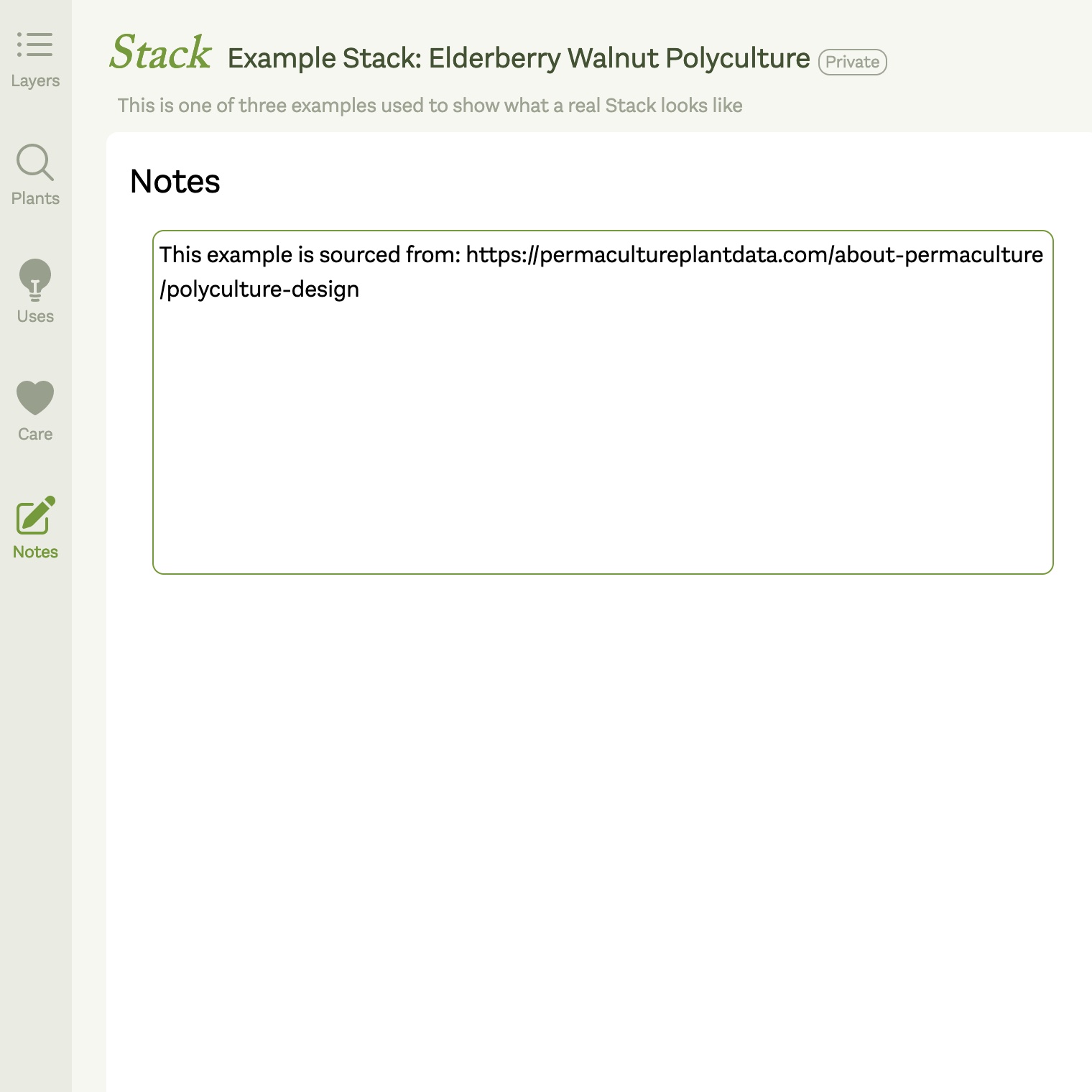While the plant data and filtering features available may be enough for your research or design needs, LiveStacks.co offers a unique feature: the ability to combine these plants into functional Food Forest Guilds. These guilds, referred to as Stacks on LiveStacks.co, are intentional groupings of complementary plants designed to serve one or more purposes.
It is recommended you take a look at the Example Stacks while reading this documentation as they make it easy to get started and see the power of Stacks and the various views available.
The benefits of combining plants into Stacks using LiveStacks.co is to provide high-level information regarding the plants making up the Stack:
1. Layers
The Layers view contains a high-level overview of which plants inhabit which Food Forest layer, and can be used to get a basic understanding of how the Stack is structured.
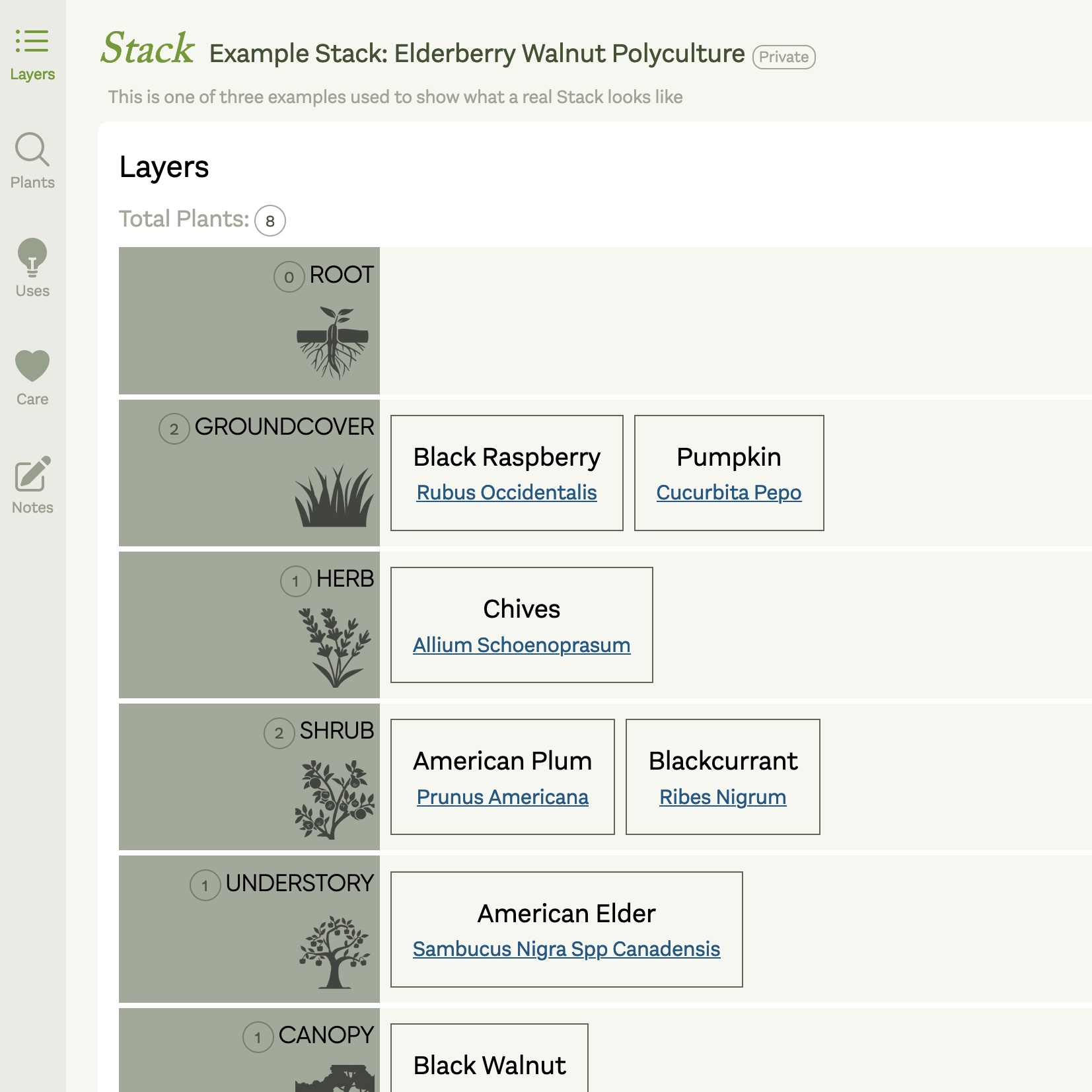
2. Plants
The Plants layer provides a list of the Plants comprising the Stack with a look and feel similar to the plants page.
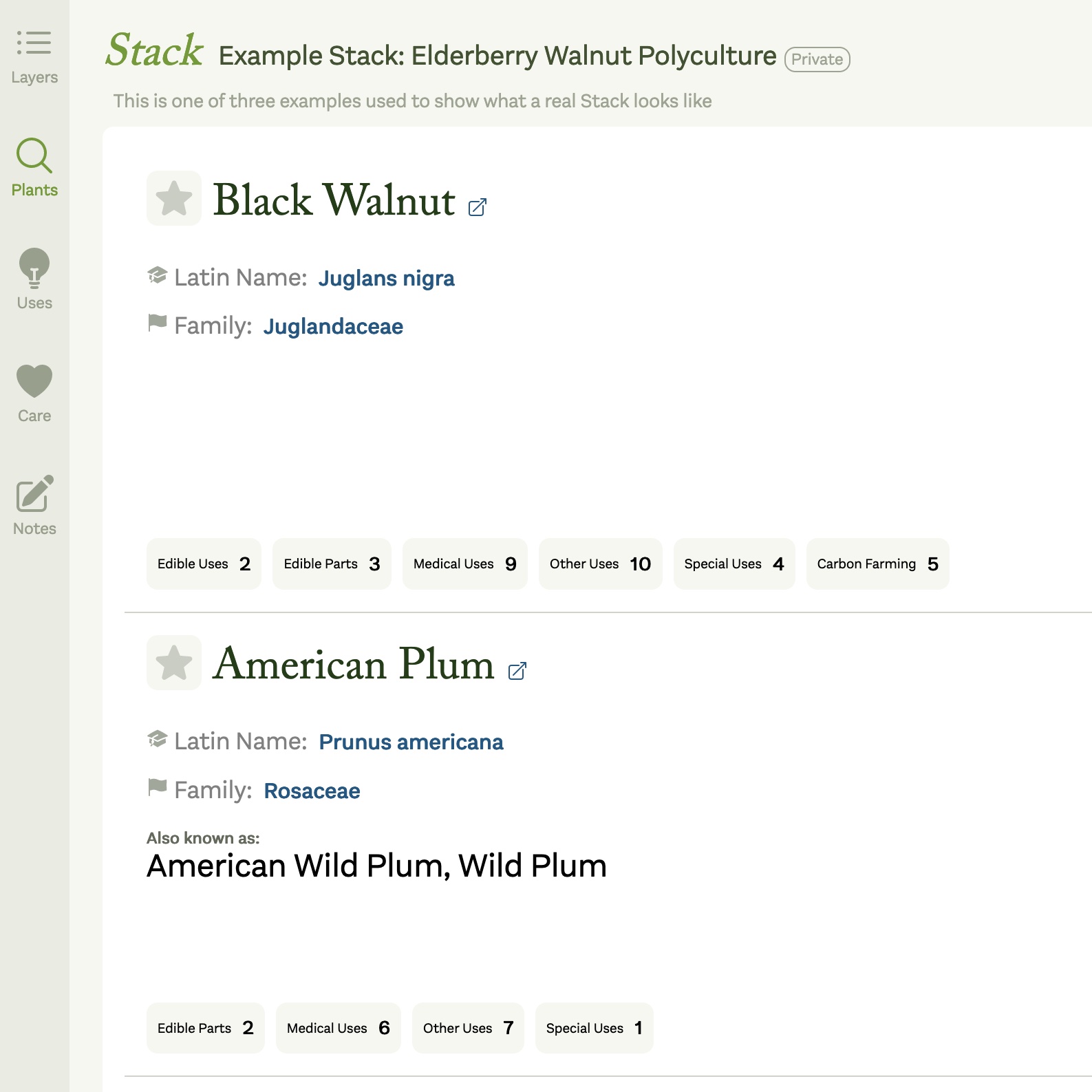
Filtering is not available in this view, and each plant displays the specific layer it has been assigned to in the Stack.
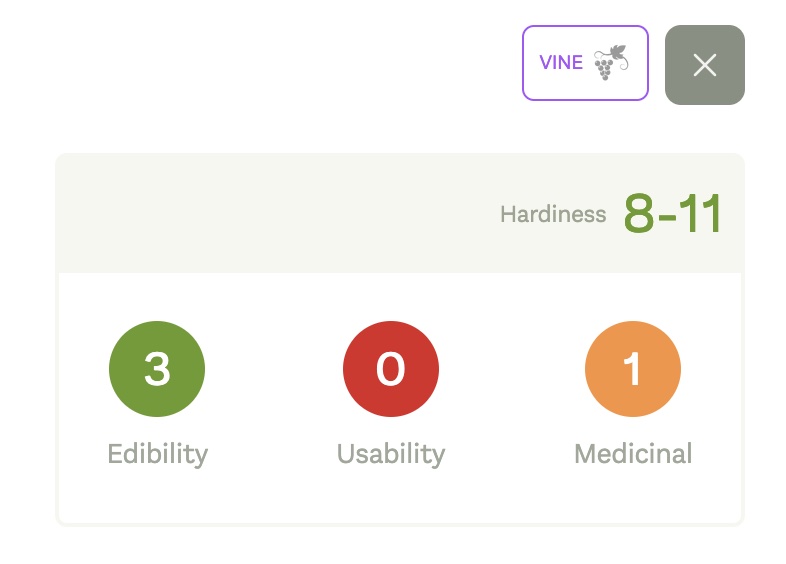
3. Uses
The Uses view is perhaps the most exciting feature of a Stack, as it really demonstrates how useful even just a handful of plants can be. Every single use of each plant within the Stack is shown, as well as a count of how many plants within the Stack offers this use.
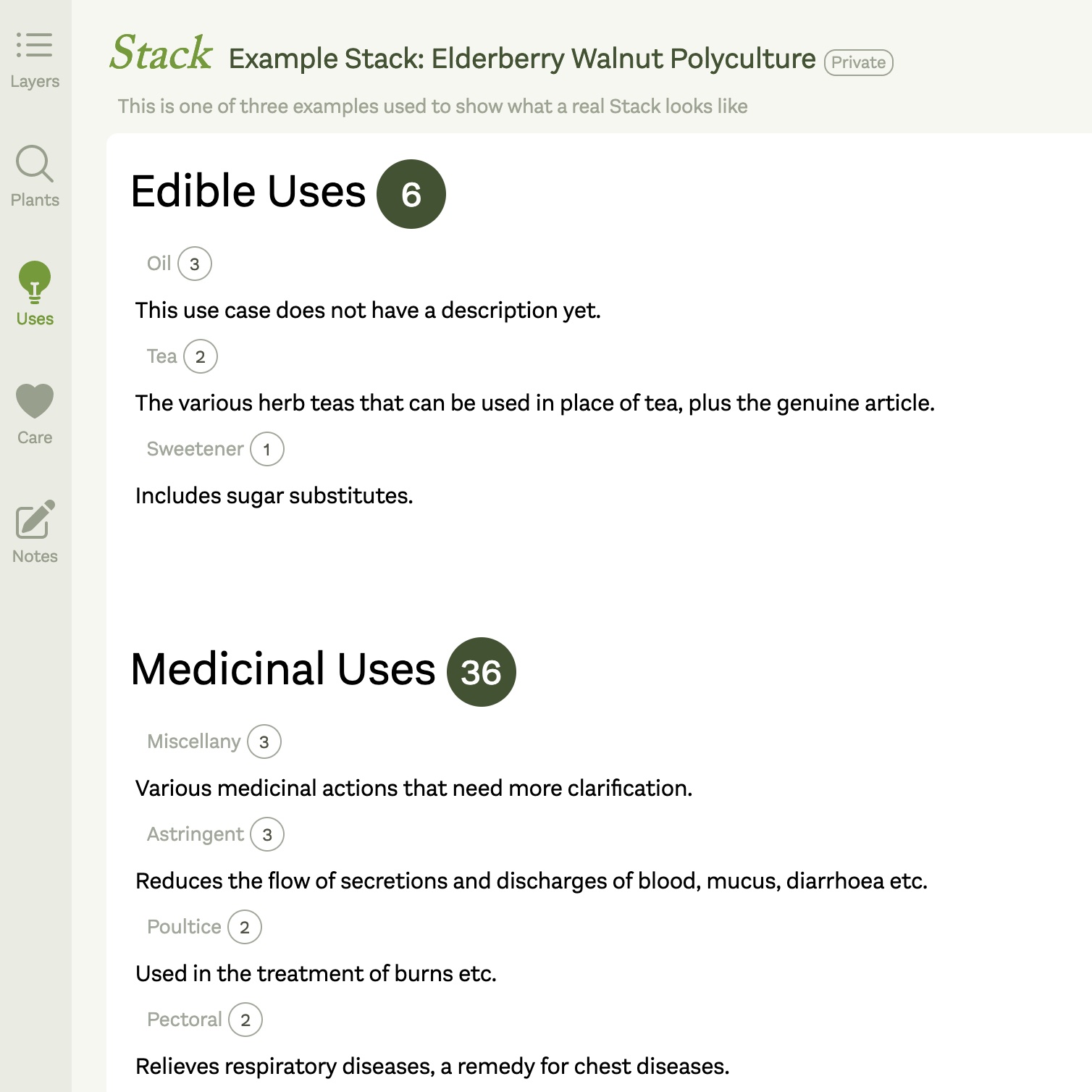
For example, in the Elderberry Walnut Polyculture example Stack you will see of the 8 total plants, 3 can be used as Oils, 2 are scented, and 3 can be used as an astringent.
Furthermore, a total is provided for each use category on total amount of uses. For example, the Elderberry Walnut Polyculture provides an impressive 36 medicinal uses, with some uses offered by multiple plants.
4. Care
The Care view provides a summary of sun, soil, temperature and hardiness requirements of the plants within the Stack. For example, with the Elderberry Walnut Polyculture example Stack you will see 5 plants require full sun, and one plant is a water plant. It also shows the full hardiness range in which the plants can survive.

Important
A single plant may have more than one value for each category, so the total care count may exceed the total number of plants. For example, a plant may be able to survive in both wet and moist soil, increasing the count for both categories.The Hardiness box will show the hardiness zone, or range, that all plants in the Stack can survive. This ensures that the entire Stack is composed of plants suitable for the same climate. However, there are some additional scenarios where a different value will be shown instead of the hardiness value:
- Invalid: Plants within the Stack cannot all operate in the same hardiness zone (see below).
- Inconclusive: None of the Plants within the Stack have a hardiness value. The total count of plants without hardiness values are shown in the count bubble for "Unknown hardiness".
- Empty: The Stack does not have any Plants yet and therefore cannot calculate the hardiness value.
While this feature is strict it does not take into account any techniques that could be used to extend a specific plant's hardiness, such as a greenhouse or winter protection -- Invalid Stacks can still work but just may require some extra care.
5. Notes
The Notes view of the Stack provides the ability to add freeform notes to the Stack, and can be used for a variety of purposes including care/cultivation details, climate requirements, locations the Stack has been successful and miscellaneous information valuable to anyone interested in using the Stack on a property.
Notes can only be edited by the creator of the Stack, but can be viewed by anyone assuming the Stack is public.
